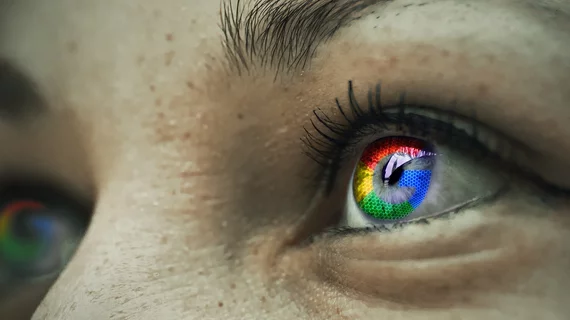Google search trends help predict imaging demand among Medicare beneficiaries
Google Trends can help predict imaging study demand among Medicare beneficiaries, according to a new analysis published Monday.
Others have already used the tech giant’s tracking of popular search terms to forecast everything from stock market fluctuations to disease outbreaks. More recently, Google Trends has also been harnessed to predict plastic surgery demand. Why not radiology, too?
West Virginia University imaging experts recently took on this challenge, analyzing search data gathered over the 15 years ending in 2019. Bottom line: They found that higher radiologist demand (based on search queries) and imaging per 1,000 Medicare beneficiaries trended with lower health scores for a state’s general population. They believe their data can provide useful clues as policymakers and practices respond to imaging demand in the coming years.
“This study provides government officials and radiologists another potential tool for gaining insights about where the greatest needs exist for radiologists who accept Medicare in the United States,” corresponding author Jeffrey Hogg, MD, a professor of radiology at WVU’s school of medicine, and co-authors wrote March 8 in Current Problems in Diagnostic Radiology.
To reach their conclusions, Hogg et al. determined how many rads accept Medicare in each state, dividing that number by population to calculate radiologist density per 10,000 residents. They further tracked relative search volume for the term “radiologist” between 2004-2019 utilizing Google Trends. And they determined the Relative Radiologist Demand Index for each state by dividing search volume by radiologist density and further adjusting to standardize among states.
West Virginia ended up with the greatest curiosity about radiologists who accept Medicare, followed by Mississippi and Arkansas. On the other end, Oregon, Vermont and California were some of the lowest. Louisiana had the highest Relative Radiologist Demand Index at 100 followed by Arkansas (94.8) and Texas (86.3), Montana (10.6), the District of Columbia (17.7) and Wyoming (28.4) at the other end of the spectrum. States with a higher rad demand index trended with lower overall health scores, while states with higher use of medical imaging also trended toward lower scores of overall health, the authors noted.
“[Relative Radiologist Demand Index] is a tool derived from Google Trends that may be useful in the estimation of the number of imaging studies in the Medicare population, therefore serving as an indirect measure of demand for radiologists who accept Medicare,” the authors concluded. “Interestingly, we observed a higher value of RRDI and number of imaging studies per 1000 Medicare beneficiaries with overall poorer health of a state's general population, however, no trend was noted for total Medicare population,” they added.
You can read more about their conclusions in the Current Problems in Diagnostic Radiology here.

